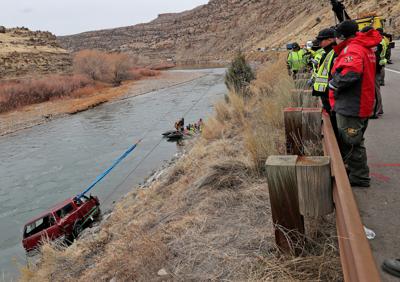The Mesa County Coroner has identified the man who died last week when his truck went off Interstate 70 in De Beque Canyon and into the Colorado River.
Mark Belt, 33, of Edgewater, was killed just after 11 p.m. Friday when his red Toyota truck went over a guardrail and into the river near mile marker 52 on I-70. He was towing a camper, which remained on the road.
The cause of death is listed as drowning and Coroner Victor Yahn reports that Belt's blood alcohol was 0.246%, more than three times the legal limit in Colorado. It is unclear if Belt was wearing his seatbelt during the incident, Yahn reported.
After the accident, Belt's truck was submerged in the river. It was recovered Monday afternoon with the help of a dive team from Summit County, which used specialized equipment to recover Belt and the vehicle, according to the Colorado State Patrol.
Smoke from planned burns expected
Smoke may be visible as early as next week from several Mesa County locations as firefighters from the Upper Colorado River Interagency Fire and Aviation Management Unit burn slash piles, the Bureau of Land Management reports.
Firefighters plan to burn more than 600 piles along Moffat Gulch four miles east of De Beque, and 1,400 piles 14 miles south of Whitewater at Gibbler Gulch generated from Bureau of Land Management fuel reduction projects. Crews will only ignite slash piles when adequate snow cover is on the ground and when weather conditions allow for a safe, effective burn and good smoke dispersal, according to the BLM. Firefighters expect to complete the burning by March.
Crews worked over the past several years to thin mountain shrubs, pinion pine and juniper in these areas to reduce the risk of wildfire and improve wildlife habitat. The piles were allowed to dry and are now ready to burn.












